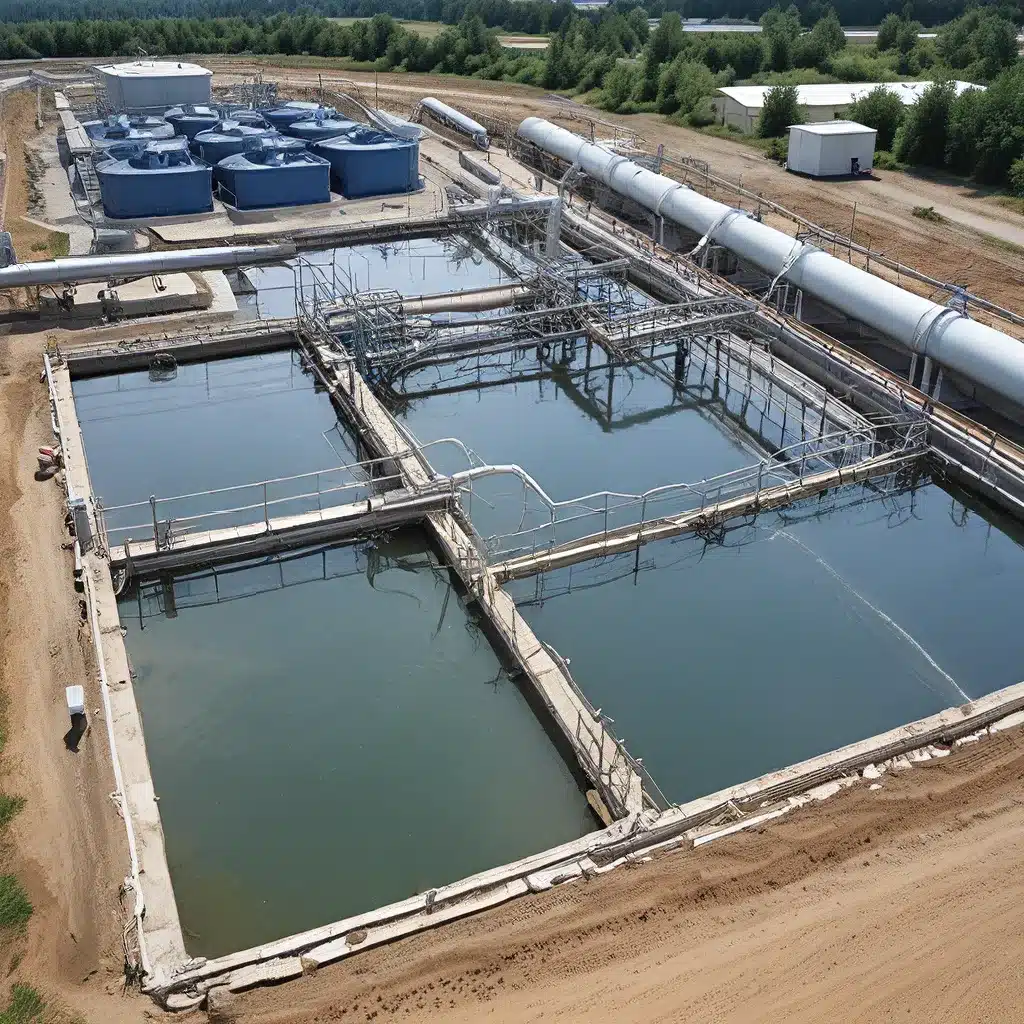
Introduction: The Evolving Landscape of Water Treatment
As the global demand for clean water escalates, the water treatment industry finds itself navigating an ever-changing landscape. Gone are the days of one-size-fits-all solutions. Today, water treatment professionals must take a more nuanced, multifaceted approach – one that not only addresses the immediate needs of clients, but also anticipates future challenges and aligns with the growing emphasis on sustainability.
I’ve spent the better part of my career working in this dynamic field, and I can tell you that the most successful water treatment strategies are those that seamlessly integrate conventional purification methods with cutting-edge advanced oxidation processes (AOPs). By harnessing the power of technologies like solar-driven photo-Fenton reactions, we can tackle even the most stubborn industrial effluents, all while minimizing our environmental impact.
Tackling the Textile Industry’s Wastewater Woes
One of the most pressing water treatment challenges facing us today comes from the textile industry. These facilities generate wastewater that is notoriously difficult to treat – it’s often laden with toxic dyes, high chemical oxygen demand (COD), and other recalcitrant pollutants. As a recent study in Scientific Reports revealed, traditional biological and physico-chemical methods often fall short when it comes to adequately purifying these complex effluents.
But where conventional approaches fall short, innovative integrated systems can shine. By combining sedimentation, screening, adsorption, and an optimized solar photo-Fenton process, we can tackle even the most daunting textile wastewater challenges. The key is finding the right balance between traditional and advanced treatment methods – a delicate dance that requires both technical expertise and a keen understanding of the unique characteristics of each individual waste stream.
Harnessing the Power of Solar Photo-Fenton
At the heart of this integrated approach lies the solar photo-Fenton process – a powerful AOP that leverages the abundant, renewable power of the sun. Unlike energy-intensive alternatives that rely on artificial UV lamps, the photo-Fenton method taps into natural sunlight to generate highly reactive hydroxyl radicals. These potent oxidizers can rapidly break down a wide range of organic pollutants, including the stubborn dyes and chemicals found in textile wastewater.
But the true magic happens when you optimize the photo-Fenton process. Through meticulous experimentation and statistical modeling, my team has identified the sweet spot where factors like pH, iron catalyst concentration, hydrogen peroxide dosage, and flow rate all work in harmony to drive unparalleled treatment efficiency. I’m talking about removing up to 85% of COD, 82% of total organic carbon (TOC), and achieving complete color removal – all in a matter of just 60 minutes under the sun.
Boosting Efficiency with Innovative Reactor Design
Of course, harnessing the power of the sun is only half the battle. The other key to unlocking the full potential of solar photo-Fenton lies in the reactor design. As the researchers at Scientific Reports discovered, a novel parabolic collector with a larger absorber tube diameter can significantly enhance solar radiation utilization, even at lower catalyst concentrations.
This innovative approach is a game-changer for the industry. By optimizing the reactor’s geometry and materials, we can maximize the capture and absorption of solar energy – a critical factor in driving the photo-Fenton reactions that are central to our integrated treatment system. And the best part? This design is versatile, capable of handling all types of wastewaters, from those containing colors and odors to those laden with suspended solids and hard-to-treat substances.
Unlocking the Power of Predictive Modeling
Of course, when it comes to implementing these advanced water treatment solutions, having the right data is key. That’s why my team has invested heavily in developing robust predictive models that can help guide our decision-making process.
Through comprehensive multivariate regression analysis, we’ve been able to derive mathematical models that correlate the key process factors – like iron catalyst concentration, hydrogen peroxide dosage, pH, temperature, and flow rate – to the treatment efficiency for color, COD, and TOC removal. These powerful tools don’t just tell us what’s happening; they help us anticipate how changes to our process parameters will impact the overall performance of the system.
Armed with these predictive models, we can optimize our operations, fine-tune our processes, and ensure that we’re consistently delivering the best possible outcomes for our clients. It’s a level of precision and control that was simply unattainable just a few years ago, and it’s revolutionizing the way we approach water treatment in the textile industry.
Driving Sustainable Outcomes
But the benefits of this integrated, optimized approach extend far beyond just improved treatment efficiency. By leveraging renewable solar energy, minimizing chemical usage, and reducing waste, we’re able to deliver sustainable solutions that align with the growing environmental consciousness of today’s industrial clients.
Gone are the days of energy-hungry, chemical-intensive water treatment processes that leave behind mountains of sludge and other problematic byproducts. Instead, our solar photo-Fenton system offers a green, economical alternative that not only purifies the wastewater, but also regenerates spent adsorbents and reduces the overall environmental footprint of the treatment process.
Conclusion: A Brighter Future for Water Treatment
As the world continues to grapple with the challenges of water scarcity and environmental protection, the water treatment industry finds itself at a critical juncture. But by embracing the power of innovation, optimization, and sustainability, we can rise to the occasion and deliver solutions that truly make a difference.
Through the integration of conventional and advanced oxidation technologies, the strategic deployment of solar-driven photo-Fenton reactions, and the development of predictive modeling capabilities, we can tackle even the most daunting industrial wastewater challenges. And in doing so, we can pave the way for a brighter, more sustainable future – one where clean water is not just a luxury, but a fundamental right for all.
So, if you’re a water treatment professional looking to stay ahead of the curve, I encourage you to explore the possibilities of this integrated, optimized approach. Because when it comes to purifying water and protecting our planet, the future is ours to shape. Let’s get to work.


